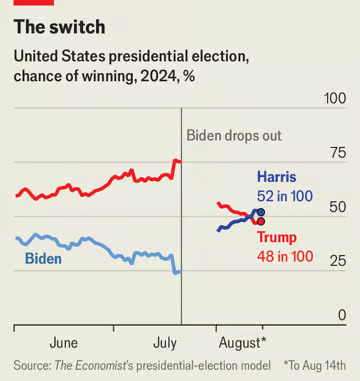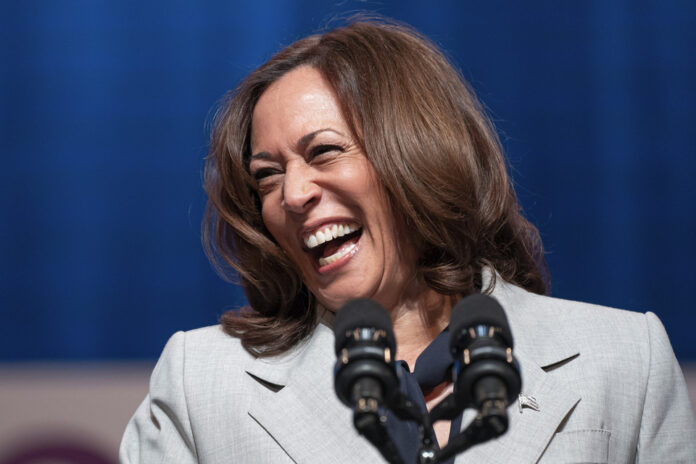With the benefit of hindsight, it is easy to paint Kamala Harris’s polling surge as inevitable. Americans consistently told pollsters they were dissatisfied with their presidential nominees. But Ms Harris has far exceeded expectations. She has transformed her personal ratings and enthused the Democratic base. She leads Donald Trump nationwide by three percentage points and has overtaken him in the most recent polling of most swing states. Our revised presidential forecast, launched this week, shows that on July 21st, the day he withdrew, Joe Biden had a 24% chance of re-election. Now, Ms Harris has a 52% chance of winning in November—in effect, it’s a toss-up.

Our model believes she would be the narrow favourite if the election were held today, with a 61% chance of winning. But history cautions against relying too heavily on polls at this stage. So far there are only three weeks’ worth of polls with Ms Harris and Mr Trump as candidates. During that time, Ms Harris’s numbers have improved markedly. But what has recently gone up could very well come back down. Our forecast therefore combines polling with “fundamentals”—based on more stable, long-term trends.
So what is our fundamentals prediction? Based on past elections, it suggests that Ms Harris will win the national popular vote by 1.8 percentage points. She benefits from not being the president at a time when our model takes the economy to be a slight political burden for the incumbent, thanks to accumulated inflation and lacklustre consumer sentiment. She also benefits from the Democrats being in power for only one term (parties in power for eight years or longer tend to suffer at the ballot box). But history suggests she will still be hurt by Mr Biden’s low approval ratings.
Crucially, our fundamentals model expects Democrats to continue to face an electoral-college disadvantage. In 2016 and 2020 polls underestimated Mr Trump’s performance in swing states in the Midwest. Our model expects Ms Harris to do worse in those states than she does nationwide. As a result, the fundamentals point to her winning the popular vote while losing the election—as Hillary Clinton did in 2016.
For now, Ms Harris is outperforming this prediction, leading by more than 1.8 points. Her swing-state polling has been mirroring this picture. Recent polling by the New York Times/Siena College had Ms Harris leading Mr Trump by four points in each of Michigan, Pennsylvania and Wisconsin. Another pollster, David Wolfson, found her leading by six points in Nevada; others put her ahead in Arizona; and a poll by YouGov Blue showed her tied in North Carolina, a state Mr Trump won in 2020.
Our forecast takes these polls seriously, but cautiously. Ms Harris’s success may partly be the result of a sugar high. In a matter of weeks, American news coverage turned from very unfavourable for Democrats—lauding Mr Trump’s debate victory, reacting to his brush with death by assassination and reflecting an enthusiastic Republican National Convention—to very favourable for them.
The rapid change in mood could have led to a phenomenon known as “partisan non-response bias”, when enthused partisans are more likely to respond to pollsters, artificially boosting their candidate’s score. Opinions of Ms Harris may shift as Republicans hone their attacks over the coming weeks. Intense campaigning between now and November could remind voters why they have such a negative view of the administration in which she serves.
Ms Harris has achieved an impressive improvement on Mr Biden’s position. But she has a lot more work to do to establish a lasting lead.
This article originally appeared in The Economist























